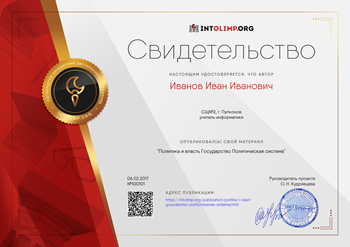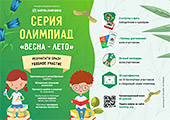Lesson plan
| LESSON: Friends’ names Adjectives to describe people ( term 2 lesson 16)
| School: Tastyozekskaya BS | ||||||
| Date: 25 November | Teacher name: Abdrakhmanova D.K. | ||||||
| CLASS: 2 | Number present: | absent: | |||||
| Learning objectives(s) that this lesson is contributing to | 2S1 make basic personal statements about people, objects and classroom routines 2U16 use conjunction and, or to link words and phrases 2S3 pronounce familiar words and expressions intelligibly
| ||||||
| Lesson objectives | All learners will be able to:
| ||||||
| Read the words (adjectives) Describe the people using new vocabulary | |||||||
| Most learners will be able to: | |||||||
| Sing a song Match the pictures with the sentences | |||||||
| Some learners will be able to: Read the descriptions and match the pictures Describe a person orally
| |||||||
|
| |||||||
| Value links | Respect and love to family | ||||||
| ICT skills | PPT / sound tracks | ||||||
| Cross curricular | Self - Knowledge | ||||||
| Previous learning | Knowing how to write their name and some familiarity with the written form of other learners’ names. Some familiarity with the written representation of common English sounds and writing simple CVC words | ||||||
| Plan | |||||||
| Planned timings | Planned activities (replace the notes below with your planned activities) | Resources | |||||
| 3 min | .Warm up The teacher greets the students and asks questions to them. -Good morning! -Good morning! -Nice to meet you! -Nice to meet you again! -How are you? -We are fine, thank you! Warm up |
| |||||
|
5-7 min
Middle
5-7min
5-7min | (W) - Well students, now please look at the new words on the slide. Pupils study the new adjectives to describe a person. -Listen to me first and then repeat after me. Ok, now let’s read one by one! We will not write the new vocabulary right now but you will write the new words at home. This will be your home work for the next lesson. New adjectives tall высокий short низкий, короткий old старый young молодой weak слабый strong сильный beautiful красивый ugly страшный happy счастливый sad грустный (W) (G) -Now students, let’s read the descriptions and guess the person on the picture! I will read you three descriptions and you will guess the person. Match the pictures with the letters. -What letter refers to the first description? Yes, it is letter M -What letter suits the second description? Of course, it is letter L -What matches with the third picture? No it is not right, it is letter K Let’s see how many pupils were right and gave correct answers. Well done, excellent job, thank you pupils. The pupils read the descriptions and guess the pictures. They match the letters with pictures. This activity can be done with the whole group or in pairs. (W) -And now pupils, we shall listen to the recording and look at the picture at the same time. We shall listen to four people from the picture. They are grandfather, the girl, the boy and the baby. They are talking about the sweet baby. The teacher asks pupils to repeat the sentences after the announcer in order to practice pronunciation. It is important to draw pupils’ attention to she/he/it and explain that the verb has is always used with these pronouns. | PPT
PPT(slide 8}
http://www.twirpx.com/file/708132/ Track 51 | |||||
|
10 min
5 min | -Did you understand everything? -Can you answer my questions? -What is the baby’s name? -What colour is her hair? -What colour are Lucy’s eyes? -What colour are grandfather’s hair? -Does grandfather have big or small ears? -what colour are grandfather’s eyes?
(G)(W) -Now let’s play a game! -You will describe a person in turns and get a score for every right answer! The pupils describe four people from the picture saying the sentences in turns. This activity also can be done as a team work. The group is divided into two subgroups. All the pupils make their examples and the teacher corrects if it is necessary. This can be a very challenging task. You may start your sentences with these examples. The teacher may write these examples on the board to make it easy. She has ........ hair and ………..eyes. He has …………. hair and ………. eyes. -Now students, look at the picture of six beautiful girls from the cartoon “Winks”. Do you know their names? -There are 6 images of the girls and there are six descriptions. The first description refers to the first girl, the second to the next girl and so on. -Read the first sentence, look at the picture and put a tick if the description is right. If it’s incorrect you may write no in the second box. The first sentence can be done as an example together with the teacher. Number 1. She has pink hair and blue eyes. Is it right or wrong? Is it true or false? This activity is aimed to check understanding and see if the students have memorised new words or not, also “colour” revision is included there. It will be better if the worksheets are printed ahead, because the teachers will need a colour printer for it. (W) Pupils stand up, listen to the song and sing it.(45 track) Plenary That’s all for today! - Did you like the lesson? -What did you like most of all? -What would you like to repeat again? -What was the most difficult for you today? The pupils share their ideas about the most difficult and the most interesting moments in the lesson. They repeat the adjectives they have learnt. They may put colourful stickers on the board as their reflection after the lesson. Home work- worksheet 2 https://learnenglishkids.britishcouncil.org/en/games/make-your-monster https://learnenglishkids.britishcouncil.org/en/games/face-match
|
PPT(slide10)
Worksheet 1
http://www.twirpx.com/file/708132/ Track 45
Worksheet 2
| |||||
| Additional information | |||||||
| Differentiation – how do you plan to give more support? How do you plan to challenge the more able learners? | Assessment – how are you planning to check learners’ learning? | Cross-curricular links | |||||
|
|
| |||||
"In winter we ski and skate",-
Says little Kate.
"In summer I like to swim",-
Says little Jim.
What do we do in spring?
In spring we play and sing!
And what do children do in autumn?
They go to school not to be at the bottom.
"In winter we ski and skate",-
Says little Kate.
"In summer I like to swim",-
Says little Jim.
What do we do in spring?
In spring we play and sing!
And what do children do in autumn?
They go to school not to be at the bottom.
"In winter we ski and skate",-
Says little Kate.
"In summer I like to swim",-
Says little Jim.
What do we do in spring?
In spring we play and sing!
And what do children do in autumn?
They go to school not to be at the bottom.







